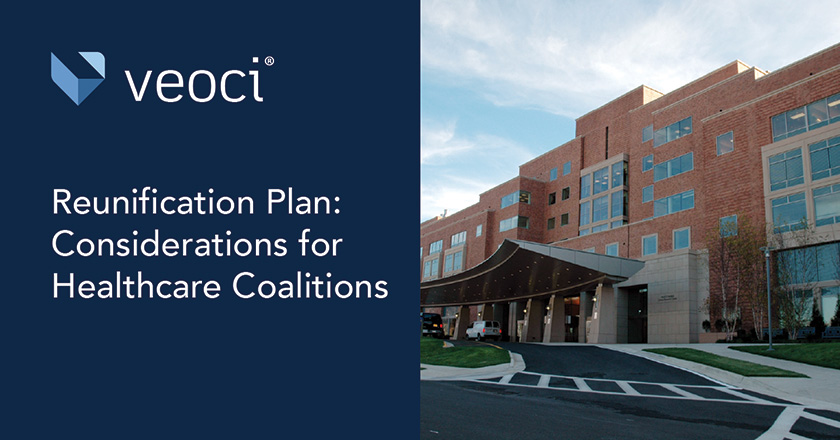Reunification plans may fall behind other objectives in emergency planning, especially for hospitals. But these outlines and its objectives shouldn’t lose priority during a response. Disasters displace people, and one of the ways to return to normal is getting everyone re-situated.
Organizations across industries and sectors should have reunification plans ready to deploy, including higher education, governments, and agencies. Hospitals and healthcare don’t escape that list.
Healthcare facilities and hospitals are often hubs that bring many people into the same area. If a disaster were to kick off, the hospital may need to reunite visitors, staff, patients, and other persons with families, caretakers, or authorities. For coalitions, the challenge and only grow.
With all of this in mind, what are some key considerations for coalitions building reunification plans?
Defining Reunifications Plans
Reunification plans do exactly what their name implies: work towards reuniting separated individuals during and following disasters.
The intended purpose of reunification plans naturally creates a lot of logistics. Communication, coordination, and data intake ultimately work on producing the intended outcomes of a reunification plan.
These plans don’t stop with a simple game of connect-the-dots. Each person who seeks the help of authorities and other disaster response leaders has unique individual needs, and a comprehensive reunification plan has to take this potential needs list into consideration.
A number of factors go into fortifying a reunification plan so that it can adequately serve the needs of people who find themselves displaced by a disaster. Let’s go over some of those components.
Delegation of Authority and Responsibilities
As we just mentioned, reunification is far from just finding the key to each lock.
There are a number of steps that lead to successful reunifications, and each can take on their own distinct process. The larger a reunification effort gets, the more critical organization becomes. A plan should lay out personnel that can effectively lead each leg of the reunification process, from intake, to care, to the final reunification.
Intake, People and Data
When individuals come into the reunification program (or others contact the program looking for someone), the reunification team and its personnel need a means of gathering essential information.
A simple form can do the trick here. Ideally, the form should capture who the person is, identifying features, and information, like medications, about an individual that are necessary for their care.
From here, the data intake should kick off the true reunification process and route to the personnel that connect the dots. Record keeping is a must-have in this process, as it may ensure that an individual continues to receive the correct care during and after displacement.
Building Relationships with Local, External, and Internal Stakeholders
Rarely will a reunification operation stay within the confines of an organization. Local authorities and other stakeholders will most certainly play a part, and a solid reunification plan needs to enable the participation of all stakeholders.
Tried-and-true communications pathways will work, but may prove to be slow, inefficient, or error-prone, especially when the technology landscape of emergency response offers much better options. A collaborative platform gives coalitions and their reunification teams a digital space to coordinate in real-time.
What really makes this piece of the plan work is establishing these relationships before a disaster. Whoever is in charge of building a reunification plan should identify what stakeholders, internal and external, will need to play a role in a reunification operation.
Communicate these expectations ahead of time where possible. Any exercises and tabletops should also try to include these stakeholders.
Wild Cards and Variables
Resources can be the most limiting factors in emergency planning, whether it’s for reunification or not. Rural and urban coalitions and their hospitals will always have different purses to work with. How the less-fed coalitions can effectively plan for reunification comes down to smart spending. Identify the program’s potential weaknesses and make that a priority.
The rural and urban difference also bubbles up in the reunification processes as well. Infrastructure, transport, and other non-monetary resources vary drastically between rural and urban areas.
The best method for ensuring these wild cards don’t throw a fit during an actual operation is to be cognizant of these variables’ impacts while planning. Scout what’s available to your coalition and hospital and think of the best utilization of those resources.








